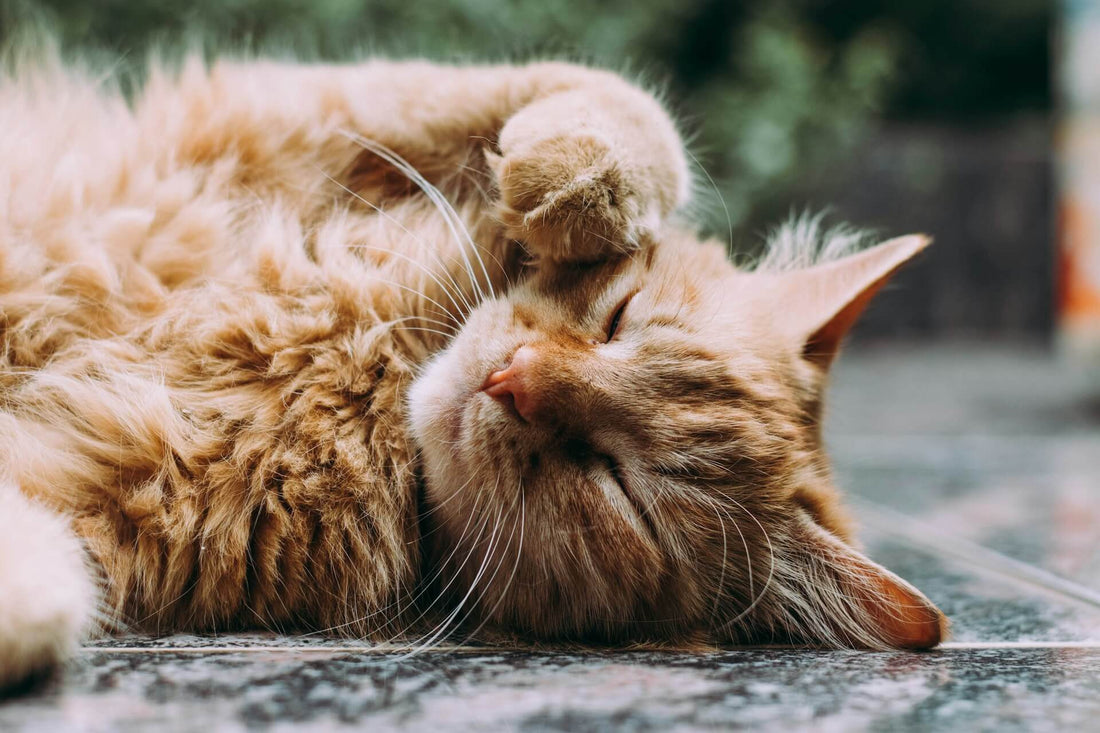

Cats have thorough grooming habits. But sometimes, they take it too far. If your cat pulls her hair out, you might be worried, confused, or even frustrated. So why is my cat pulling her hair out? Typical reasons are allergies, stress, parasites, etc.
I’ll guide you through the potential causes of this behavior and offer solutions. My explanation will help your cat and ease your concerns.
Hair pulling is when a cat grooms herself excessively. So over-grooming creates bald patches, irritated skin, or even sores on her body and tail. It’s important to recognize the signs early on:

I'll explain 08 causes to find the right solution. Here are some typical reasons:
Allergies
Various factors can trigger allergies, like food, environmental elements like pollen or dust, and flea bites. An allergic reaction shows itching on her skin. It leads to excessive grooming and hair pulling.
Stress & Anxiety
Cats are sensitive creatures. So environmental changes can cause stress and anxiety. Moving to a new home, introducing a new pet, or rearranging furniture can drive over-grooming. Repetitive grooming helps your cat to soothe herself during difficult times.
Psychogenic Alopecia
Feline psychogenic alopecia causes grooming or pulling out fur from her belly, thighs, and front legs. But they may groom other areas too. Any cat can get psychogenic alopecia. Cats with high-strung personalities develop it more.
Parasites
Parasitic fleas, mites, or ticks can cause intense itching. You may not see fleas. But your cat is potentially allergic to flea saliva leading to hair pulling.
Mites and ticks also irritate her skin. They prompt your cat to scratch or lick excessively.
Skin Infections
Bacterial and fungal infections can irritate the skin. They cause discomfort. So your cat pulls her hair out. These infections can develop from untreated wounds, poor grooming habits, or other underlying health issues.
Pain or Discomfort
Sometimes, hair pulling is a response to pain. Cats may over-groom an area that’s causing them discomfort. For example, it happens when a joint is affected by arthritis or a spot where they’ve had surgery. Over-grooming soothes her pain.
Hormonal Imbalances
Conditions like hyperthyroidism can lead to hormonal imbalances. Such instability may drive the cat to pull her hair out. These imbalances can affect the skin and coat, making them dry, itchy, and prone to hair loss.
Injuries
Often, they do overgrooming across the spine. It indicates the cat is having arthritic pain or a spinal injury.
If you notice hair pulling, it’s important to consult a veterinarian, especially if:
A vet can provide a professional diagnosis, determining whether the hair pulling is due to a medical issue, behavioral problem, or a combination of factors.
Once you’ve identified the causes, you can take steps to manage the issue at home:
Reduce Stress: Create a calm environment for your cat.
Flea Control: Ensure your cat is on a regular flea prevention regimen. Even indoor cats can benefit from flea control. These bugs can enter the home via other pets or through windows.
Diet Adjustments: If allergies are responsible, work with your vet to identify potential food triggers. A hypoallergenic diet may help reduce skin irritation.
Regular Grooming: Regular grooming can downsize hairballs, reduce skin irritation, and keep her coat healthy. Use gentle brushes that are suitable for your cat’s coat type.
Also, learn the reasons for losing hair on her back.
To prevent your cat from pulling her hair out in the future, consider 03 tips:
Matting can worsen skin problems and contribute to hair pulling. Early detection is key:
Environmental improvement is important. For instance, interactive toys, climbing structures, and puzzle feeders can reduce boredom in cats. Keeping busy can stop over-grooming by keeping her mentally stimulated. Get happy cats in seconds.
In the case of anxiety, behavioral therapy can stop hair-pulling. Desensitize her to stressors, create a safe space, and gradually introduce new elements in their environment.
These steps help manage anxiety better. Severe cases need vet consultation for possible anti-anxiety medications.
Seasonal changes can influence her hair-pulling. For example -
So my cat pulls her hair more during these times. Understanding these patterns can help cat owners anticipate and prevent issues before they escalate.
So why is my cat pulling her hair out? Common causes include allergies, stress, parasites, skin infections, pain, and hormonal imbalances. But the right approach can manage it effectively.
This post has laid out the causes and proactive measures. Following these to help your cat maintain a healthy coat and live a comfortable life. Regular grooming, stress management, and timely veterinary care can prevent and cure it. Cat hairfall should worry you no more now that you know all about it!No comments
0 comments